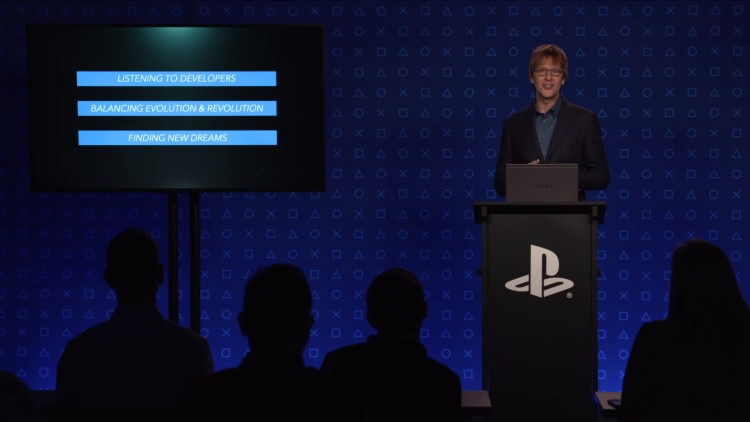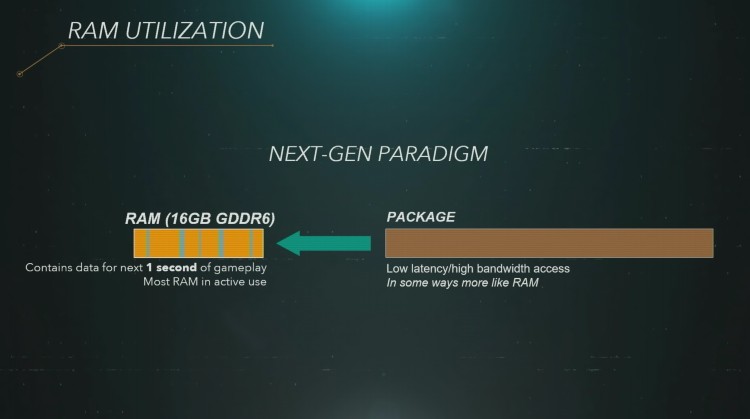
Recently, Sony pulled the curtain back to reveal some very important new technical information on the upcoming PlayStation 5. Fans have been clamouring for any information they can get on Sony’s next generation machine and boy did Sony deliver.
The presentation from Lead System Architect Mark Cerny was very technical. However, I’ve broken it down to give you all the vital information that you need to know.
Sign-up to be the first to know when PlayStation 5 updates are available
History of PlayStation
Before we get into all the juicy details of PlayStation 5, let’s take a little look at the history of PlayStation. For instance, do you know when Sony launched their first console here in North America? The PlayStation or PS1 was launched on September 9, 1995. Some of the key launch titles for PS1 were Ridge Racer, Battle Arena Toshinden and Rayman.

After selling a whopping 102 million PlayStation consoles worldwide, Sony released PlayStation 2 on October 26, 2000. The PS2 came equipped with a DVD drive that could play movies and sold over 158 million units worldwide over its lifetime. Notable games released for the PS2 include God of War, Kingdom Hearts, and Grand Theft Auto: San Andreas.
The PlayStation 3 was equipped with a Bluray drive and launched November 17, 2006. It came in two versions, a 20GB model for $549.99 and a 60GB model for $659.99 here in Canada. The PS3 had some great games including Uncharted, Little Big Planet and The Last of Us.
And, that brings us to the PlayStation 4. The PS4 launched November 15, 2013 and has been a huge success for Sony. Games that have made the PS4 a success include Horizon Zero Dawn, Grand Theft Auto V, and Marvel’s Spider-Man to name a few.
Now, let’s take a look at the next generation PlayStation console, PlayStation 5!
Design philosophy
The presentation began with Cerny taking the stage to discuss the goals for the PlayStation 5 hardware and how they influenced the development of the console. Mark explained that he is a big believer of console generations with substantially new capabilities every 5-7 years. Previously, consoles were designed and developed in secrecy without any input from developers. In the PlayStation family, this was the way consoles were made up and including PlayStation 3.
Starting with the PlayStation 4 this all changed. Design and development was centred around three principals: listening to developers, balancing evolution & revolution, and finding new dreams.

Listening to developers
First and foremost when Sony started to develop the PlayStation 5 was listening to developers. While the engineers at PlayStation do have ideas for the new hardware, a lot of what is put into a PlayStation console comes from the needs of developers. Anything that can be done to help make development of games on PlayStation hardware easier will be done.
Cerny noted that every 2 years he takes a tour to visit the developers around the world. His purpose is to see how developers are doing with the current PlayStation console and what they would like to see in future consoles, PlayStation 5.
What Mark discovered is that the number one feature most requested for the next generation, Playstation 5, is a Solid State Drive. He then went on to explain that while Sony was happy to include a SSD, there were also many challenges in design and development by including it.

Balancing evolution & revolution
Next, Mark explained that while it is important to include a generational leap with the PlayStation 5—it’s also important to keep the console familiar to game developers. With the PlayStation 1, 2, and 3 the target was a revolution each time with a brand new feature set. One of the drawbacks with each console was that time for developers to get up and running was longer with each console.
For example, the PlayStation took developers 1-2 months, PS2 3-6 months, and PS3 6-12 months. Cerny clarified that this up and running time is the time it takes before graphics and other aspects of game development are up and running. With the PlayStation 4, Sony managed to get the time for developers to get up and running back down to 1-2 months.
Developing PlayStation 5, Sony had tension with the new graphics card by adding new features and keeping the programming model familiar. With the PlayStation 5, developers are now up and running in under a month.
 Finding new dreams
Finding new dreams
The third philosophy behind developing new hardware is something Cerny likes to call “finding new dreams”. These are innovations other than upgrading the processor, graphics card, and ram. The biggest feature in this arena is the PlayStation 5’s custom audio.
In particular, 3D audio. Cerny admitted that this feature didn’t come from talking with developers but more so it was something Sony wanted to do.
Features and benefits of the SSD in PlayStation 5
Including a traditional hard drive with the PlayStation 4 was beneficial for game development. However, after just a few years, developers were reaching limitations due to the hard drive speed in the PS4. The hard drive would spend two-thirds of the time looking for data to load and only one-third loading data. As a result, the player waits for the game to boot, waits for the game to load, and waits for a level to reload if they die.
As a result, Sony set out to include a super fast SSD with a custom I/O in PlayStation 5 that is 100 times faster. Whereas the PlayStation 4 hard drive would take approximately 20 seconds to load 1GB of data, the SSD inside the PlayStation 5 takes 0.27 seconds to load 2GB of data. This means that with PlayStation 5, a game boots in just a few seconds and there are no load screens.

Game designer freedom
Interestingly enough, Cerny explains that the main reason Sony went with a SSD in PlayStation 5 is because it gives game designers freedom. Currently, game developers have to design levels around hard drive speed limitations. This means, hiding loading by having the player go through a long corridor or take a 15-20 second elevator ride.
With the SSD inside PS5, developers can load huge amounts of data in under a second—thus eliminating level design limitations. Currently, when a game gets a patch files are downloaded and new files are constructed as a result. With the PS5 and its super fast SSD, a new file no longer has to be constructed.
Substantially better memory utilization
Finally, ram utilization on the PS5 is substantially better. On PS4, developers have to load the next 30 seconds of what might happen in a game into memory. On the PlayStation 5, only data for the next 1 second is needed. This means that the PS5 doesn’t need massive amounts of ram. As a result, Sony has included 16GB of ram—double that of the PS4 Pro.

Balancing cost vs storage space
Super fast SSDs such as the one that is included in PlayStation 5 isn’t cheap. To determine how big of a drive was needed, Sony looked at the play patterns of a broad range of gamers. As a result, they determined that a 825GB SSD would be included. Though, if you want to add more storage you can. Only certain commercial SSD drives will be compatible. And, Sony will be announcing those drives shortly after launch.
Advanced graphics processing unit
The design approach Sony took when working with AMD to develop the advanced GPU inside of the PlayStation 5 was that it needed new features and not just performance improvements. As a result, the custom RDNA 2 based AMD GPU includes new features, runs at a higher efficiency, is backwards compatible with PS4 games and offers a familiar environment for developers.
Furthermore, the new features incorporated into the GPU such as ray tracing don’t have to be used by developers if they do not want to. And, Cerny explained that the traditional way of measuring a GPU’s absolute performance by teraflops no longer applies in the next generation. Specifically, a PS4 teraflop does not equal the same teraflop of performance on PS5.
The same can be said about the PS5 GPU’s number of compute units. For example, the 36 RDNA 2 CUs in the PS5 GPU is equal to 58 PS4 CUs. Additionally, Sony took a different approach when it comes to the PS5’s GPU speed. With the PS5, full power is supplied to the GPU and the speed at what it runs on is variable. As a result, the GPU inside the PS5 will spend most of its time at 2.23 GHz, which equates to 10.3 teraflops.

Backwards compatibility
As mentioned earlier, the PS5 is backwards compatible with PS4 and PS4 Pro. To do this, the logic and feature set from the PS4 and PS4 Pro is included in the PS5’s GPU. Due to the massive performance increase, not all PS4 titles will be backwards compatible. Testing is being done on a title by title basis.
The top 100 PS4 games ranked by playtime are being targeted for backwards compatibility at launch.

3D audio
Finally, the PlayStation 5 not only provides a substantial improvement in graphics but also audio. A custom engine for 3D audio has been built for PlayStation 5, which gives every sound in the game dimensionality .
What this means is that with the PS5 you don’t have to own licensed Dolby Atmos sound bars or headsets to get the feeling that you are actually there. Things such as being able to clearly locate an enemy just by the sounds they make is now possible. And, you will be able to hear environmental noise such as rain drops hitting different surfaces around you.
PlayStation 5 is coming holiday 2020
Below is a nice little chart with the official specs for PlayStation 5. I’m not going to lie, it sure does sound and look like the PS5 is going to be a giant leap over the PlayStation 4. And, the thought process and considerations behind the PlayStation 5’s design are impressive.

However, when push comes to shove, it all comes down to the games available for PlayStation 5. During Mark’s talk, he mentioned that we would be getting a look at PlayStation 5 games later this year. It’s interesting to see that the PS5’s backwards compatibility, as far as we know at this point, is limited to PlayStation 4 games. Will Sony use PlayStation Now as a means of backwards compatibility for PS3, PS2, and PS games?
Let me know in the comments section below what you think of the new PlayStation 5 specs.
Sign-up to be the first to know when PlayStation 5 updates are available
Click here to see the full line of video game software available at Bestbuy.ca
Click here to see digital video game downloads offered at BestBuy.ca




Honestly, system specs don’t mean a lot to me. I’m not interested in the games I can play, and I don’t really care how realistic. The graphics can be. I prefer a ,ore csrtoony style in my games.
Thanks for the article Jon!
Comments are closed.